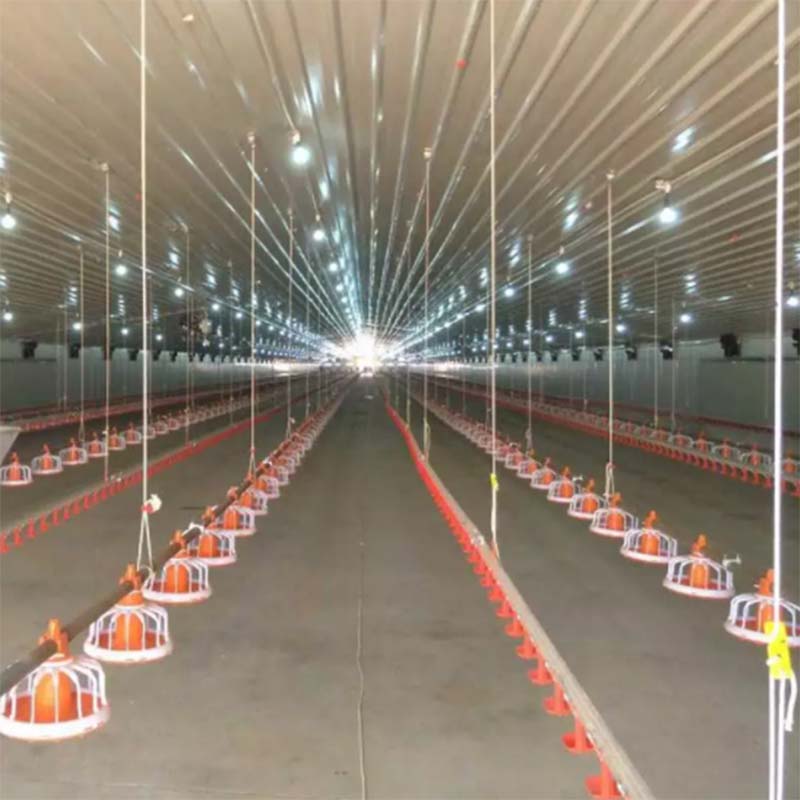chicken egg layer cages
Dec . 23, 2024 09:45 Back to list
chicken egg layer cages
The Evolution and Benefits of Chicken Egg Layer Cages
In the world of poultry farming, the production of eggs is a highly optimized process aimed at meeting the growing demands of consumers. Among the various methods of raising hens for egg production, chicken egg layer cages have emerged as a prominent and efficient solution. These cages are designed specifically to house layers—hens raised primarily for their eggs—and they play a crucial role in modern agricultural practices.
Understanding Layer Cages
Layer cages are typically multi-tiered structures that allow farmers to house several hens in a compact space, maximizing the use of available land. These cages are often made from durable materials such as galvanized steel and are designed to be easy to clean, ensuring high standards of hygiene and biosecurity. The cages can vary in size and configuration, but they generally adhere to specific guidelines that promote the welfare of the chickens while optimizing egg production.
Types of Layer Cages
There are two main types of layer cages conventional cages and enriched cages. Conventional cages are designed to hold a small number of hens in a confined space, which allows farmers to manage their health and nutrition effectively. However, concerns have been raised regarding the welfare of the hens in such confined quarters.
In response, many producers have transitioned to enriched cages, which are larger and provide hens with more space and features such as nesting areas, perches, and scratching zones. These enhancements cater to the natural behaviors of hens, thereby promoting a higher quality of life while still maintaining high production levels.
Benefits of Using Layer Cages
1. Increased Production Efficiency One of the primary advantages of layer cages is the significant increase in egg production efficiency. With hens housed in a controlled environment, farmers can manage factors such as light, temperature, and humidity, all of which play a critical role in egg production.
chicken egg layer cages

2. Space Optimization Layer cages allow poultry farmers to maximize their land use. By stacking cages vertically, farmers can house a large number of hens in a relatively small footprint, making it possible to produce more eggs while minimizing land use.
3. Improved Biosecurity Layer cages enhance biosecurity measures by reducing the risk of disease transmission among hens. The design allows for easier cleaning and disinfection, which is vital in preventing outbreaks of avian diseases. This containment also helps isolate sick birds, preventing potential contamination of the entire flock.
4. Simplified Management The use of layer cages streamlines feeding, watering, and collection of eggs. Automated systems can be integrated into the design, ensuring that hens receive consistent nutrition and hydration while making it easier for farmers to gather eggs efficiently.
5. Reduction in Labor Costs With improved management systems and space optimization, labor costs can be significantly reduced. Fewer workers are required to manage larger flocks, allowing farmers to allocate resources more effectively.
Addressing Welfare Concerns
While layer cages have many benefits, they have also faced criticism, particularly concerning animal welfare. The confinement of hens in small spaces can lead to stress and behavioral issues. To combat this, many producers are shifting to enriched cage systems, which offer hens more freedom and opportunities to engage in natural behaviors.
In addition, consumer awareness has led to the rise of cage-free and free-range egg production systems. Although these methods may provide more space for the hens, they often come with increased costs and lower production efficiency. As such, the debate continues, and the poultry industry is tasked with finding a balance between efficient production and animal welfare.
Conclusion
The use of chicken egg layer cages represents a significant innovation in poultry farming, providing numerous benefits that cater to both production efficiency and biosecurity. As the industry evolves, continued advancements in cage design and management practices will be crucial in addressing animal welfare concerns while satisfying market demands. Ultimately, the future of egg production lies in finding sustainable practices that respect both the farmers’ needs and the well-being of the hens. As consumers become increasingly conscious of their food choices, the pressure on egg producers to adapt will only grow, paving the way for a more responsible and ethical approach to poultry farming.
-
Hot Sale 24 & 18 Door Rabbit Cages - Premium Breeding Solutions
NewsJul.25,2025
-
Automatic Feeding Line System Pan Feeder Nipple Drinker - Anping County Yize Metal Products Co., Ltd.
NewsJul.21,2025
-
Automatic Feeding Line System Pan Feeder Nipple Drinker - Anping County Yize Metal Products Co., Ltd.
NewsJul.21,2025
-
Automatic Feeding Line System - Anping Yize | Precision & Nipple
NewsJul.21,2025
-
Automatic Feeding Line System - Anping Yize | Precision & Nipple
NewsJul.21,2025
-
Automatic Feeding Line System-Anping County Yize Metal Products Co., Ltd.|Efficient Feed Distribution&Customized Animal Farming Solutions
NewsJul.21,2025






